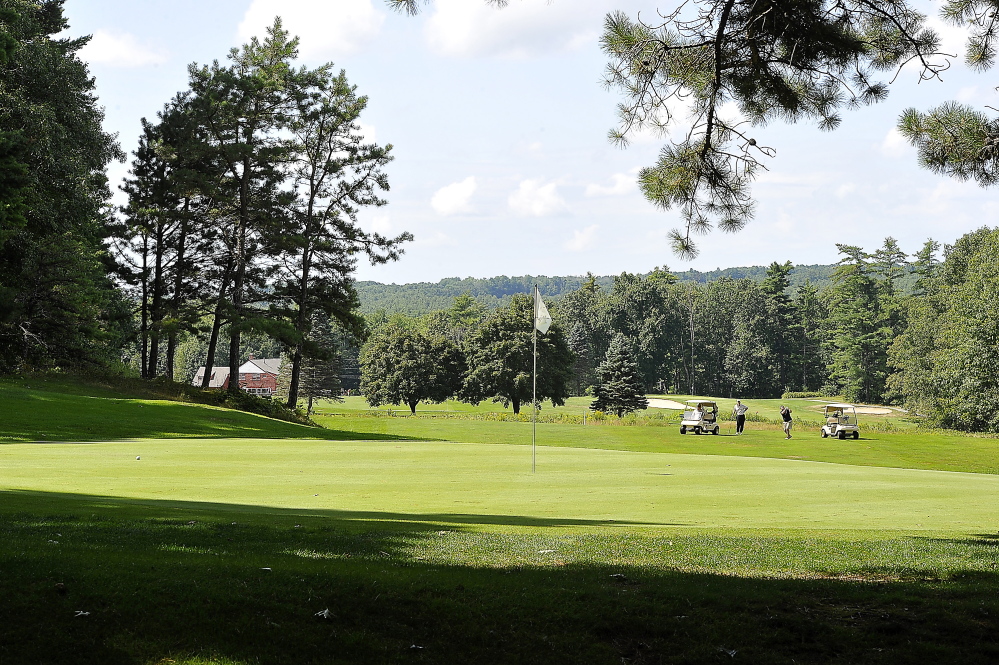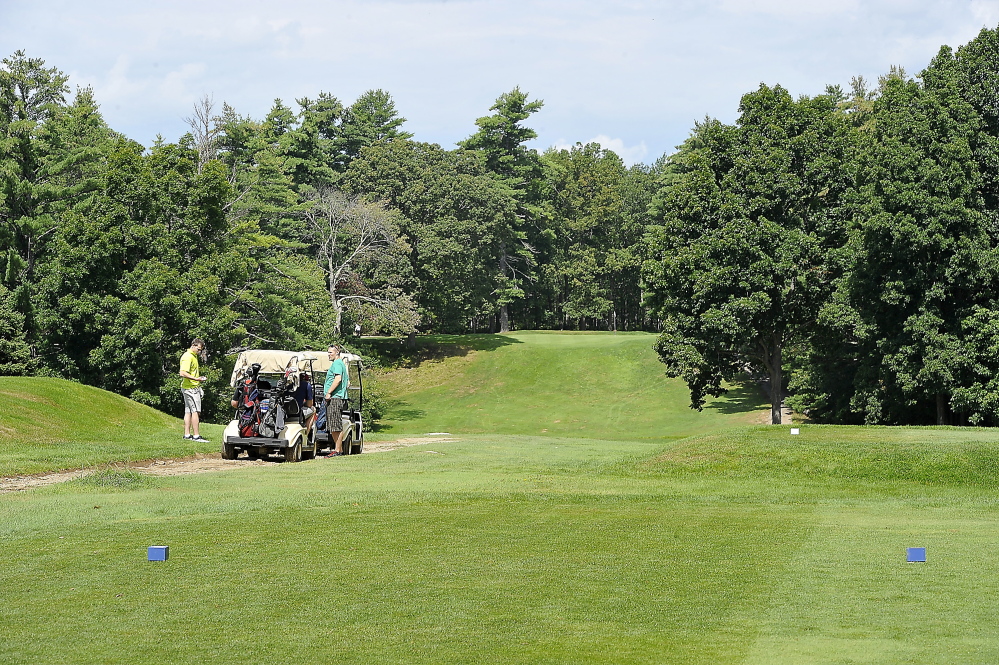Jake McVety is in his first season as head pro at the Sanford Country Club. After working the previous five years at golf courses in North Carolina, Texas and New York, McVety, who grew up in Augusta, wanted to come back to Maine.
The passion Maine golfers have for the game and their golf courses were something McVety missed.
“The members really care about the place,” said McVety. “They’re always giving me advice on what would be good for the course. Someone else might look at that as criticism, but I view it as really wanting what’s best for the golf course.”
A lot of those passionate members play in Randy Kleinrock’s group seven days a week. Kleinrock is the leader of Sanford Country Club’s largest golfing group. He makes up the teams seven days a week, collects the results of each day’s game and announces the winners of closest to the pins and team skins in the clubhouse afterward.
“Randy is always bringing in different types of games,” said Steve Carlisle, who has been a member for 55 years. “We depend on Randy to bring it all together and he always does.”
When golfers talk about Sanford Country Club, they often mention two qualities: the nice layout and the challenge. It’s open to the public, but members feel they have their own little club.
“It’s challenging, but fair. I never get bored playing it,” said Kleinrock, who has been a member for 20 years.
Sanford Country Club has a rich history. It started as a nine-hole course in 1923, built by the Goodall Mills in Sanford. Back then, you could get a seasonal membership to the golf course and the Sanford Town Club, which had a pool, for $35. Alex Chisholm, a student of architect Donald Ross, designed the original nine. Chisholm was the golf pro at the Portland Country Club in Falmouth from 1913 to 1931 and won the Maine Open in 1928 and 1929.
Boston Red Sox great Ted Williams got in a round at Sanford from time to time, often on his return trip from fishing in Canada. He had a good friend in the area who was a member. The course has held qualifying tournaments for the U.S. Amateur and the U.S. Mid-Amateur. In 2004, it hosted the Maine Amateur, won by Ricky Jones.
In 1989, fifteen local business people purchased the course and soon added another nine holes. Eighteen holes opened in 1996.
“Our hope was that the holes would be intermingled so that the average person couldn’t really tell what were the original holes and what were the new holes,” said Bob Dubois of Wells, one of the owners.
There are 11 owners now and three years ago they made a deal with Up to Par Management of Lexington, Virginia, to run the course. This is the management company’s only course in Maine.
Of the original nine holes, four have retained the same hole designation – Nos. 6, 7, 8 and 9. The sixth, a 421-yard par 4, is the No. 1 handicap hole and one of the best par 4s in the state. The tee shot is downhill with the second shot to a elevated green. It takes two well-struck shots to reach the green in regulation, and even if you reach it in two, there’s no guarantee of a par because the green is large and sloped from top to bottom.
“I call it the Green Monster,” said Pete Malley of Wells.
Malley, one of New Hampshire’s top amateurs for several years, joined Sanford this year after moving from Manchester, New Hampshire.
“I like the layout and it’s a very challenging course,” he said. “I’m a fan of old-styled golf courses.”
The uphill, ninth hole is another challenging par-4 at Sanford. It’s 398 yards from the blue tees and 413 yards from the black tees.
From the black tees, the course measures 6,700 yards which offers single digit handicappers plenty of challenge. With four sets of tees on every hole, Sanford is playable for golfers of all levels.
The only water hazards on the course are to the right of the seventh fairway and in front of the short, par-3 13th.
Sanford is a tough course because of its length, some tight driving holes that bring out of bounds into play and its large and sloped greens.
The par-5, 12th measures 605 yards from the black tees and a more reasonable 489 yards from the white tees. Strategy is important at Sanford – whether to play aggressively hitting the driver or play for position with a 3-wood or hybrid off the tee.
“You have to know where your misses are,” said Carlisle, who started caddying for his father at Sanford in the late 1950s.
“It’s best to be short of the green than over it. Going long makes it that much tougher to come back to the pin. I enjoy the whole course. The holes are so varied.”
Holes 4 and 5 are back-to-back par-5s with small landing areas. You can hit the driver on the fourth hole like Malley did last week. He drew it around the corner and put his second shot on the green for a two-putt birdie.
Like many courses in the Northeast, Sanford suffered damage to the greens during a tough winter and spring. They started the season with eight temporary greens. The greens have come a long way since May and June.
“For us to battle back, I’m encouraged,” said General Manager Pete Harrison, a part owner of the management company.
Harrison said a new tee box is being built for the driving range and will be ready next spring.
Sanford, which has 175 members, is offering a membership incentive for 2015. If a person buys a 2015 membership now, they can play the rest of this season for free.
On Sunday afternoons, junior golfers play free with their parents or grandparents, who pay $10 to play with them. There are men’s and women’s leagues during the week.
Copy the Story Link
Send questions/comments to the editors.





Success. Please wait for the page to reload. If the page does not reload within 5 seconds, please refresh the page.
Enter your email and password to access comments.
Hi, to comment on stories you must . This profile is in addition to your subscription and website login.
Already have a commenting profile? .
Invalid username/password.
Please check your email to confirm and complete your registration.
Only subscribers are eligible to post comments. Please subscribe or login first for digital access. Here’s why.
Use the form below to reset your password. When you've submitted your account email, we will send an email with a reset code.